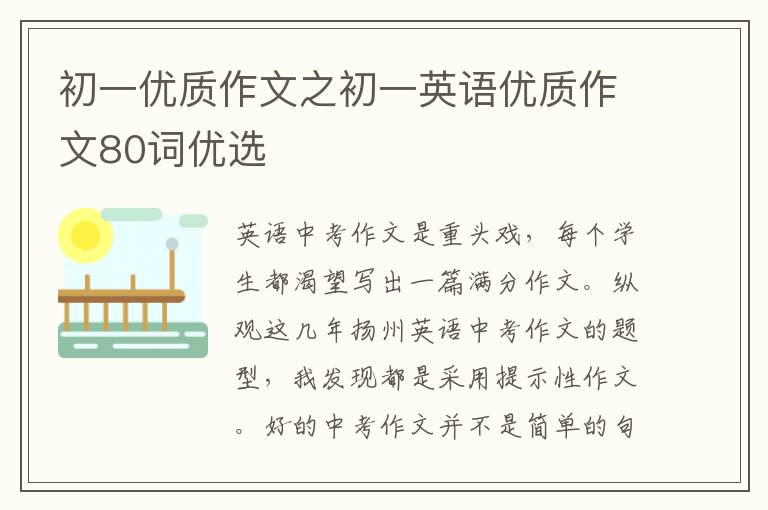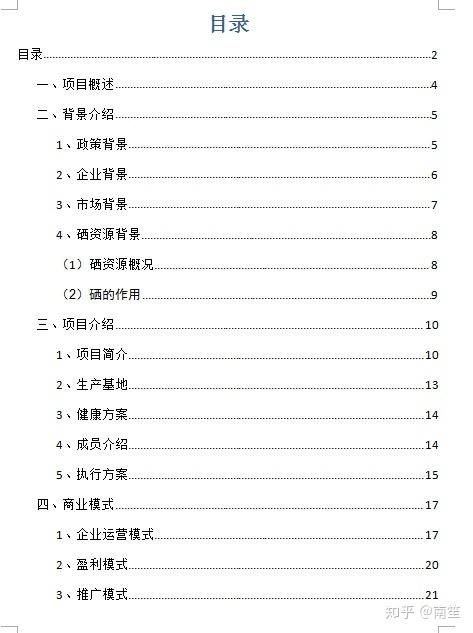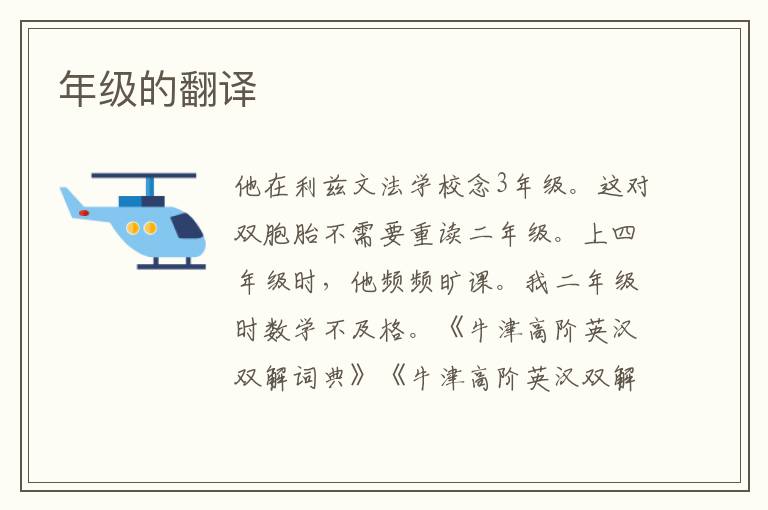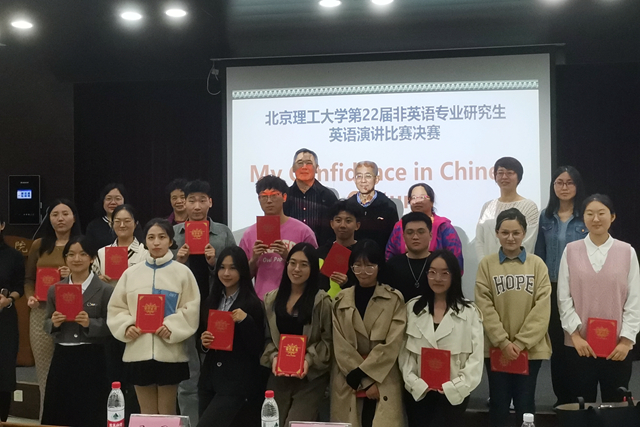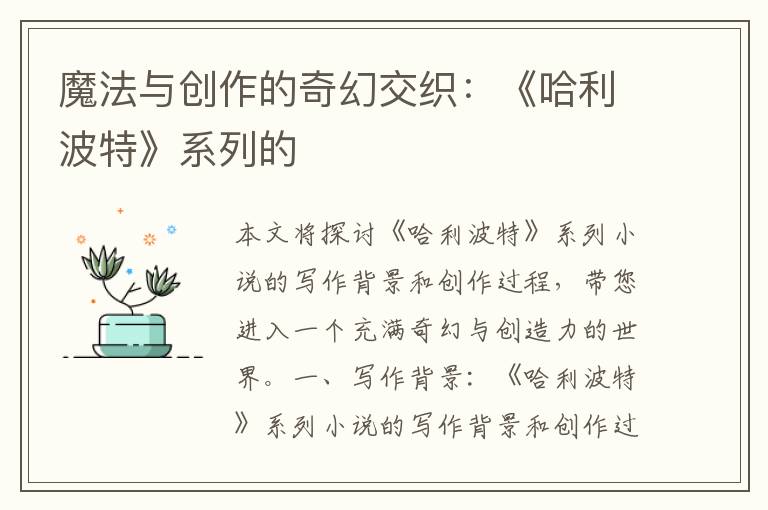2023考研英語閱讀貧困的歷史畫像

Penury portrait
貧困的歷史畫像
The consensus on raising people out of poverty issurprisingly recent
直到最近人們才就脫貧問題達成共識,實在令人驚訝
ON JULY 17th India released its latest povertyfigures. They tell an encouraging tale: just under22% of Indians were below the poverty line in 2011-12, down from over 37% in 2004-05.With an election not far off, these statistics will not go unchallenged. Naysayers arealready grumbling that the numbers have been released early to make the government lookgood. But even as political opponents slug it out, it is worth noting what they are not arguingabout. Nobody is saying that a decline in poverty is a bad thing. Nor does anyone disputethat policymakers should try to help large numbers of poor people out of penury. Thismirrors a worldwide consensus: whether the United Nations or the World Bank, sundrypublic officials or high-minded celebrities, everyone thinks that poverty alleviation is bothdesirable and possible. The debates are about the details.
7月17日,印度公布了最新的貧困人口數(shù)據(jù)。數(shù)據(jù)表現(xiàn)出一派令人鼓舞的跡象:2011年至2023年間,生活在貧困線以下的印度人口比例從2004至2005年間的37%以上降至22%以下。該數(shù)據(jù)公布之時恰逢印度國會大選日益臨近,因此注定會引發(fā)質疑。質疑者已嚷嚷著這些數(shù)據(jù)提早發(fā)布不過是為了彰顯政府的政績。但是,即使政治對手意欲在此問題上與政府爭個高下,可爭議之外的東西才是值得人們關注的。沒人說貧困人口數(shù)下降是一件糟糕的事。當然人們也不會就決策層是否應該試著幫助為數(shù)眾多的窮人脫離貧困展開爭論。這一現(xiàn)象反映出一個已在世界范圍內(nèi)達成的共識:不論是聯(lián)合國或是世界銀行,還是形形色色的公職人員或心系蒼生的名人,人人都認為扶貧不僅可取,而且可行。所有的爭論都關乎于細節(jié)問題。
That might sound wholly unsurprising. Yet in a new paper Martin Ravallion, an economicsprofessor at Georgetown University and a former research director at the World Bank,charts the evolution of thinking on poverty over the past three centuries. He reckons thatthis consensus is of remarkably recent vintage. Not that long ago every element of thereceived wisdomthat poverty is a problem, that public policy should try to reduce thenumbers of poor, and that there are good ways to try to do so without hurting theeconomywould have been suspect.
這聽起來完全不足為奇。然而,曾擔任過世界銀行研究局局長的喬治城大學經(jīng)濟學教授馬丁?拉瓦雷在一篇論文中記錄了過去三個世紀以來人們對貧困的思考的演變歷程。他認為直到最近人們才在貧困的認知方面達成共識。就在不久之前,長期積累下來并且為多數(shù)人所接受的觀念貧困是個難題,公共政策應該試著減少貧困人口數(shù)量,而且有一些既能夠達成這一目標而又不傷害經(jīng)濟發(fā)展的方式一直都受到人們的質疑。
According to the mercantilist thinking that dominated European thought between the 16th and18th centuries, poverty was socially useful. True, it was miserable for the poor. But it alsokept the economic engine humming by ensuring the availability of plentiful cheap labour.Bernard de Mandeville, an 18th-century economist and philosopher, thought it manifest,that in a free nation where slaves are not allowd of, the surest wealth consists in a multitudeof laborious poor. That attitude was the norm.
在16世紀到18世紀間占據(jù)歐洲思想界的重商主義者看來,貧困對社會是有所幫助的。的確,在當時這對窮人來說不啻于一個悲慘的世界。但是,貧困同樣確保了充足的廉價勞動力,維持經(jīng)濟引擎不斷高速運轉。18世紀經(jīng)濟學家兼哲學家的伯納德?曼德維爾認為貧困表明,在一個不允許有奴隸存在的自由國度里,最可靠的財富蘊藏在無數(shù)勤懇的窮人手中。這一觀點在當時實屬平常。
If poor people were regarded as instrumental in ensuring economic development, thatexplains why there was little appetite for policies to help them leave poverty behind. Whataction there was tended to be palliative in nature. In the 18th century changes to the PoorLaws were designed to stop adverse shocks like failed harvests or bereavements frommaking life even harder for already poor people. Such policies were designed to protect thepoor from the worst deprivations, not to raise them up.
如果窮人被視為確保經(jīng)濟發(fā)展的工具,這就解釋為什么在當時幾乎沒有人愿意制定實行幫助窮人脫離貧困的政策了。為消除貧困而采取的任何行動在當時看來根本就是治標不治本的。18世紀,修訂《濟貧法》的目的便是避免那些業(yè)已陷入貧困的人們遭受更悲慘的打擊,比如說農(nóng)作物歉收或遭受喪親之痛,以免他們的生活更加艱辛。制定此類政策的目的是保護窮人免于陷入徹底的赤貧,而不是幫助他們脫離貧困。
In the late 18th century attitudes towards the poor took on a moralising tone. ThomasMalthus, a clergyman, blamed the plight of the poor on their own flaws. Technological changemight drive wages above subsistence levels, but only temporarily because the fecundity ofthe poor would soon drive wages back down. His thinking inspired the introduction of a newPoor Law in 1834, which tried to make the workhouse their only option. Outdoorreliefgiving the poor moneyneeded to be stopped.
18世紀后半葉,人們在對貧窮的看法中夾雜了道德論調。身為牧師的托馬斯?馬爾薩斯將窮人的困苦歸咎于他們自身的不足。技術革新或許會驅使薪資上漲到能維持溫飽的水平之上,但是這只是暫時的,因為窮人的多生多育很快就會帶動薪資回落。他的思想啟發(fā)了當時政府在1834年引進實施了一部新的《濟貧法》,試圖使去濟貧院成為窮人唯一的選擇。院外救濟給窮人發(fā)錢必須終止。
Adam Smith took a more humane view. He saw the social and emotional toll poverty couldtake, and sought to increase support for the idea of redistributive taxation: The rich shouldcontribute to the public expence [sic], not only in proportion to their revenue, butsomething more than in that proportion. But even the father of economics did not provide acoherent strategy for moving people permanently out of poverty.
亞當?斯密的觀點則更為人性化。他認為貧困會對社會和人們的情緒造成惡劣的影響,同時尋找機會增加人們對稅收再分配這一理念的支持。富人應該為公共支出貢獻出一部分所得,不單單以其收入的比例計算,而是應該高于這一比例。但是,即便是經(jīng)濟學之父也未給幫助人們永遠脫離貧困開出一劑療效持久的藥方。
By the 20th century the research of Charles Booth and Seebohm Rowntree had brought theissue of poverty firmly into the public consciousness. This in turn encouraged new thinkingabout the economic rationale for reducing penury. The classical school believed that thereal constraint on growth was aggregate savings. Given that the rich saved more than thepoor, this implied that less poverty would mean lower growth. John Maynard Keynesdisputed this view, arguing that it was aggregate consumption that mattered, in which casereducing poverty could actually aid growth. But it was not until the 1990s that a coherenttheoretical framework emerged to show how high levels of poverty stifled investment andinnovation. For example, several models showed how unequal access to credit meant thatthe poor were less able to invest in their own education or businesses than was optimal,leading to lower growth for the economy as a whole. Scholars buttressed the theory withempirical evidence that high initial levels of poverty reduced subsequent growth indeveloping countries.
20世紀,查爾斯?布斯和希波姆?朗特里將貧困問題深深地刻入了公眾的意識之中。這一舉動反過來鼓勵了人們對減少貧困的經(jīng)濟原理有了全新思考。古典學派相信真正制約經(jīng)濟增長的是總儲蓄量。由于富人比窮人儲蓄的多,這表明貧困人數(shù)越少就意味著經(jīng)濟增長率越低。約翰?梅納德?凱恩斯駁斥了這一觀點,他認為總消費量起到了至關重要的作用,在這種情況下,減少貧困實際上能夠有助于增長。但是直到1990年代,一個統(tǒng)一的理論框架才出現(xiàn),表明高水平的貧困如何限制了投資和創(chuàng)新。比如說,有些經(jīng)濟學模型表明獲得信貸的機會不均等是如何導致窮人比優(yōu)秀的人更無力于投資自身的教育或是生意,進而導致整個社會的經(jīng)濟增長處于較低的水平。學者們用無可辯駁的證據(jù)給為之一理論提供了支持:在發(fā)展中國家,初始的高水平貧困率降低了該國后繼的經(jīng)濟增長。
Poor relations
牽強的聯(lián)系
New theories of poverty were also overturning received notions of why the poor stayed poor.The fault had long been placed at their door: the poor were variously lazy, prone toalcoholism and incapable of disciplined work. Such tropes are still occasionally heardtoday, but the horrors of the Depression in the 1930s led many to re-evaluate the idea thatpoverty was mainly the result of peoples own actions. Advances in economic modelsmeanwhile allowed policymakers to see how low levels of education, health and nutritioncould keep people stuck in penury. Policies to subsidise education or health care weredesirable not merely for their own sake but also because they would help people break outof poverty.
新的貧困理論同樣也顛覆了人們長久以來對窮人深陷貧窮原因的認知。一直以來都認為窮人是咎由自取:窮人想方設法偷懶,容易酗酒并且不能從事要求紀律性的工作。今天這些陳詞濫調依然不時的喧囂塵上,但是1930年代經(jīng)濟大蕭條期間的慘況使一些人重新審視了貧困主要是人自身行為的惡果這一個觀念。同時,經(jīng)濟學模型不斷完善,使得決策者們認識到低水平的教育、健康和營養(yǎng)是如何使人們陷入貧困難以自拔。補貼教育和醫(yī)保的政策能夠得以執(zhí)行不單單是因為自身的緣故,同樣還因為這政策能夠幫助人們擺脫貧困。
The growth of conditional cash transfers, schemes like Brazils Bolsa Familia that give poorpeople money as long as they send their children to school or have them vaccinated, arelogical developments of these ideas. The notion of schooling the poor to a better life seemedabsurd in the era of de Mandeville: Going to school in comparison to working is idleness,and the longer boys continue in this easy sort of life, the more unfit theyll be when grown upfor downright labour. Such poverty of thinking may sound archaic, but it persisted forlonger than you might think.
有條件的現(xiàn)金補助計劃的增多正是這些理念合乎邏輯的演進,比如說巴西的家庭補助金計劃,只要人們將孩子送去學校或是給孩子接種牛痘疫苗,政府就給他們發(fā)放現(xiàn)金。在曼德維爾所處的時代,為了能過上更好的生活而讓窮人去上學的理念似乎有些荒謬。與工作比起來,上學就是懶惰的表現(xiàn),而且孩子們過這種簡單生活的時間越長,長大之后越難以適應完全的體力勞動。這對關于貧困的想法聽起來可能會感覺有些過時,但是它們持續(xù)的時間超乎你的想象。
Penury portrait
貧困的歷史畫像
The consensus on raising people out of poverty issurprisingly recent
直到最近人們才就脫貧問題達成共識,實在令人驚訝
ON JULY 17th India released its latest povertyfigures. They tell an encouraging tale: just under22% of Indians were below the poverty line in 2011-12, down from over 37% in 2004-05.With an election not far off, these statistics will not go unchallenged. Naysayers arealready grumbling that the numbers have been released early to make the government lookgood. But even as political opponents slug it out, it is worth noting what they are not arguingabout. Nobody is saying that a decline in poverty is a bad thing. Nor does anyone disputethat policymakers should try to help large numbers of poor people out of penury. Thismirrors a worldwide consensus: whether the United Nations or the World Bank, sundrypublic officials or high-minded celebrities, everyone thinks that poverty alleviation is bothdesirable and possible. The debates are about the details.
7月17日,印度公布了最新的貧困人口數(shù)據(jù)。數(shù)據(jù)表現(xiàn)出一派令人鼓舞的跡象:2011年至2023年間,生活在貧困線以下的印度人口比例從2004至2005年間的37%以上降至22%以下。該數(shù)據(jù)公布之時恰逢印度國會大選日益臨近,因此注定會引發(fā)質疑。質疑者已嚷嚷著這些數(shù)據(jù)提早發(fā)布不過是為了彰顯政府的政績。但是,即使政治對手意欲在此問題上與政府爭個高下,可爭議之外的東西才是值得人們關注的。沒人說貧困人口數(shù)下降是一件糟糕的事。當然人們也不會就決策層是否應該試著幫助為數(shù)眾多的窮人脫離貧困展開爭論。這一現(xiàn)象反映出一個已在世界范圍內(nèi)達成的共識:不論是聯(lián)合國或是世界銀行,還是形形色色的公職人員或心系蒼生的名人,人人都認為扶貧不僅可取,而且可行。所有的爭論都關乎于細節(jié)問題。
That might sound wholly unsurprising. Yet in a new paper Martin Ravallion, an economicsprofessor at Georgetown University and a former research director at the World Bank,charts the evolution of thinking on poverty over the past three centuries. He reckons thatthis consensus is of remarkably recent vintage. Not that long ago every element of thereceived wisdomthat poverty is a problem, that public policy should try to reduce thenumbers of poor, and that there are good ways to try to do so without hurting theeconomywould have been suspect.
這聽起來完全不足為奇。然而,曾擔任過世界銀行研究局局長的喬治城大學經(jīng)濟學教授馬丁?拉瓦雷在一篇論文中記錄了過去三個世紀以來人們對貧困的思考的演變歷程。他認為直到最近人們才在貧困的認知方面達成共識。就在不久之前,長期積累下來并且為多數(shù)人所接受的觀念貧困是個難題,公共政策應該試著減少貧困人口數(shù)量,而且有一些既能夠達成這一目標而又不傷害經(jīng)濟發(fā)展的方式一直都受到人們的質疑。
According to the mercantilist thinking that dominated European thought between the 16th and18th centuries, poverty was socially useful. True, it was miserable for the poor. But it alsokept the economic engine humming by ensuring the availability of plentiful cheap labour.Bernard de Mandeville, an 18th-century economist and philosopher, thought it manifest,that in a free nation where slaves are not allowd of, the surest wealth consists in a multitudeof laborious poor. That attitude was the norm.
在16世紀到18世紀間占據(jù)歐洲思想界的重商主義者看來,貧困對社會是有所幫助的。的確,在當時這對窮人來說不啻于一個悲慘的世界。但是,貧困同樣確保了充足的廉價勞動力,維持經(jīng)濟引擎不斷高速運轉。18世紀經(jīng)濟學家兼哲學家的伯納德?曼德維爾認為貧困表明,在一個不允許有奴隸存在的自由國度里,最可靠的財富蘊藏在無數(shù)勤懇的窮人手中。這一觀點在當時實屬平常。
If poor people were regarded as instrumental in ensuring economic development, thatexplains why there was little appetite for policies to help them leave poverty behind. Whataction there was tended to be palliative in nature. In the 18th century changes to the PoorLaws were designed to stop adverse shocks like failed harvests or bereavements frommaking life even harder for already poor people. Such policies were designed to protect thepoor from the worst deprivations, not to raise them up.
如果窮人被視為確保經(jīng)濟發(fā)展的工具,這就解釋為什么在當時幾乎沒有人愿意制定實行幫助窮人脫離貧困的政策了。為消除貧困而采取的任何行動在當時看來根本就是治標不治本的。18世紀,修訂《濟貧法》的目的便是避免那些業(yè)已陷入貧困的人們遭受更悲慘的打擊,比如說農(nóng)作物歉收或遭受喪親之痛,以免他們的生活更加艱辛。制定此類政策的目的是保護窮人免于陷入徹底的赤貧,而不是幫助他們脫離貧困。
In the late 18th century attitudes towards the poor took on a moralising tone. ThomasMalthus, a clergyman, blamed the plight of the poor on their own flaws. Technological changemight drive wages above subsistence levels, but only temporarily because the fecundity ofthe poor would soon drive wages back down. His thinking inspired the introduction of a newPoor Law in 1834, which tried to make the workhouse their only option. Outdoorreliefgiving the poor moneyneeded to be stopped.
18世紀后半葉,人們在對貧窮的看法中夾雜了道德論調。身為牧師的托馬斯?馬爾薩斯將窮人的困苦歸咎于他們自身的不足。技術革新或許會驅使薪資上漲到能維持溫飽的水平之上,但是這只是暫時的,因為窮人的多生多育很快就會帶動薪資回落。他的思想啟發(fā)了當時政府在1834年引進實施了一部新的《濟貧法》,試圖使去濟貧院成為窮人唯一的選擇。院外救濟給窮人發(fā)錢必須終止。
Adam Smith took a more humane view. He saw the social and emotional toll poverty couldtake, and sought to increase support for the idea of redistributive taxation: The rich shouldcontribute to the public expence [sic], not only in proportion to their revenue, butsomething more than in that proportion. But even the father of economics did not provide acoherent strategy for moving people permanently out of poverty.
亞當?斯密的觀點則更為人性化。他認為貧困會對社會和人們的情緒造成惡劣的影響,同時尋找機會增加人們對稅收再分配這一理念的支持。富人應該為公共支出貢獻出一部分所得,不單單以其收入的比例計算,而是應該高于這一比例。但是,即便是經(jīng)濟學之父也未給幫助人們永遠脫離貧困開出一劑療效持久的藥方。
By the 20th century the research of Charles Booth and Seebohm Rowntree had brought theissue of poverty firmly into the public consciousness. This in turn encouraged new thinkingabout the economic rationale for reducing penury. The classical school believed that thereal constraint on growth was aggregate savings. Given that the rich saved more than thepoor, this implied that less poverty would mean lower growth. John Maynard Keynesdisputed this view, arguing that it was aggregate consumption that mattered, in which casereducing poverty could actually aid growth. But it was not until the 1990s that a coherenttheoretical framework emerged to show how high levels of poverty stifled investment andinnovation. For example, several models showed how unequal access to credit meant thatthe poor were less able to invest in their own education or businesses than was optimal,leading to lower growth for the economy as a whole. Scholars buttressed the theory withempirical evidence that high initial levels of poverty reduced subsequent growth indeveloping countries.
20世紀,查爾斯?布斯和希波姆?朗特里將貧困問題深深地刻入了公眾的意識之中。這一舉動反過來鼓勵了人們對減少貧困的經(jīng)濟原理有了全新思考。古典學派相信真正制約經(jīng)濟增長的是總儲蓄量。由于富人比窮人儲蓄的多,這表明貧困人數(shù)越少就意味著經(jīng)濟增長率越低。約翰?梅納德?凱恩斯駁斥了這一觀點,他認為總消費量起到了至關重要的作用,在這種情況下,減少貧困實際上能夠有助于增長。但是直到1990年代,一個統(tǒng)一的理論框架才出現(xiàn),表明高水平的貧困如何限制了投資和創(chuàng)新。比如說,有些經(jīng)濟學模型表明獲得信貸的機會不均等是如何導致窮人比優(yōu)秀的人更無力于投資自身的教育或是生意,進而導致整個社會的經(jīng)濟增長處于較低的水平。學者們用無可辯駁的證據(jù)給為之一理論提供了支持:在發(fā)展中國家,初始的高水平貧困率降低了該國后繼的經(jīng)濟增長。
Poor relations
牽強的聯(lián)系
New theories of poverty were also overturning received notions of why the poor stayed poor.The fault had long been placed at their door: the poor were variously lazy, prone toalcoholism and incapable of disciplined work. Such tropes are still occasionally heardtoday, but the horrors of the Depression in the 1930s led many to re-evaluate the idea thatpoverty was mainly the result of peoples own actions. Advances in economic modelsmeanwhile allowed policymakers to see how low levels of education, health and nutritioncould keep people stuck in penury. Policies to subsidise education or health care weredesirable not merely for their own sake but also because they would help people break outof poverty.
新的貧困理論同樣也顛覆了人們長久以來對窮人深陷貧窮原因的認知。一直以來都認為窮人是咎由自取:窮人想方設法偷懶,容易酗酒并且不能從事要求紀律性的工作。今天這些陳詞濫調依然不時的喧囂塵上,但是1930年代經(jīng)濟大蕭條期間的慘況使一些人重新審視了貧困主要是人自身行為的惡果這一個觀念。同時,經(jīng)濟學模型不斷完善,使得決策者們認識到低水平的教育、健康和營養(yǎng)是如何使人們陷入貧困難以自拔。補貼教育和醫(yī)保的政策能夠得以執(zhí)行不單單是因為自身的緣故,同樣還因為這政策能夠幫助人們擺脫貧困。
The growth of conditional cash transfers, schemes like Brazils Bolsa Familia that give poorpeople money as long as they send their children to school or have them vaccinated, arelogical developments of these ideas. The notion of schooling the poor to a better life seemedabsurd in the era of de Mandeville: Going to school in comparison to working is idleness,and the longer boys continue in this easy sort of life, the more unfit theyll be when grown upfor downright labour. Such poverty of thinking may sound archaic, but it persisted forlonger than you might think.
有條件的現(xiàn)金補助計劃的增多正是這些理念合乎邏輯的演進,比如說巴西的家庭補助金計劃,只要人們將孩子送去學校或是給孩子接種牛痘疫苗,政府就給他們發(fā)放現(xiàn)金。在曼德維爾所處的時代,為了能過上更好的生活而讓窮人去上學的理念似乎有些荒謬。與工作比起來,上學就是懶惰的表現(xiàn),而且孩子們過這種簡單生活的時間越長,長大之后越難以適應完全的體力勞動。這對關于貧困的想法聽起來可能會感覺有些過時,但是它們持續(xù)的時間超乎你的想象。



